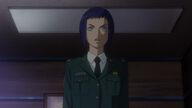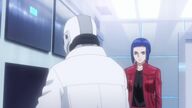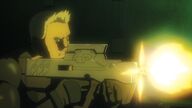Synopsis
This work takes place after the Arise tetralogy.
On the issue of the development route of the electronic brain and prosthetics, the conservatives and the updaters have conflicted. Conservatives want to hold on to the existing prosthetics and electronic brain market (it's simply a copy of IBM and Nokia), and technology updaters don't want to be dragged down by compatibility, and want to implement new specifications and standards. Due to the extremely large number of conflicts of interest, the two factions each made a big news. One side engaged in an incident in which soldiers took high-ranking officials hostage, and the other side blew up the prime minister who wanted to solve the problem of standard setting.
Before the big news, the "Army 501 Special Agency" that Motoko once belonged to had been disbanded, and some of the remaining funds were approved by the parliament for the construction of the anti-terrorist team led by Motoko. At this time, Motoko Kusanagi was not Daisuke Aramaki's subordinate, and her anti-terrorist team was also independent of Section 9 of the Public Security Bureau.
After the big news broke out, Motoko and his party, the Public Security Section 9, the military intelligence department, and the former members of the 501 organization each launched an investigation. The investigation found that third-party hackers were selling an electronic brain virus called Fire Starter to both parties. Those infected with the virus can be implanted with false memories and thus be manipulated by others, as detailed in the Arise Four Parts. Due to the high level of the hacker and the use of the same style of Motoko, Kusanagi Motoko himself became a suspect for a time, and was hunted down by the other three forces and forced to fight.
It was later discovered that the identity of the third-party hacker was Laijin, who had been "bombed to death" before. And she, like Motoko, is a very special prosthetic manipulator. Her body is difficult to move, and the prosthetic body that is usually used to show people is remotely controlled. The two even lived in the same welfare/research facility as children and had contacts.
In the end, the two met, and Laijin committed suicide. The ending pays homage to the 95 version of Ghost in the Shell, and the easter egg pays homage to the end of the second season of Ghost in the Shell in 2004.
shortcoming
1. Most of the pictures are still relatively delicate, but many details are not as good as the old version
2. Strange character modeling
3. Suffocating Operation
4. Unreasonable villain setting
5. In the TV version, there is enough time to briefly describe various branch lines, but in the theatrical version with very limited time, there are slightly redundant plots
View more about Ghost in the Shell: The New Movie reviews











